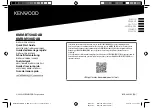
MDS 05-4846A01, Rev. F
SD Series Technical Manual
11
3.2 Example Systems
The following sections describe common system arrangements for the
SD transceiver. Other variations are possible, and if you have questions
about a specific application not covered here, you may contact your fac-
tory representative using the information at the back of this guide. For
typical radio settings in these systems, refer to Table 2 on Page 10.
Multiple Address Systems (MAS)
This is a common application for the transceiver. It consists of a central
master unit and several associated remote units as shown in Figure 5. An
MAS network provides communication between a central host com-
puter and remote terminal units (RTUs) or other data collection devices
in the field. Often, such a system is used to carry telemetry data to and
from widely separated remote radios.
Typical MAS applications may be for automatic, remote monitoring of
gas wells, water tank levels, electric power distribution systems, and
similar control and measurement functions.
Invisible place holder
Figure 5. Typical MAS Point-to-Multipoint Network
Point-to-Point System
Where permitted, the transceiver may also be used in a point-to-point
arrangement.
A point-to-point system consists of just two radios—one
master and one remote (see Figure 6). It provides a simplex (or
half-duplex) communications link for the transfer of data between two
locations.
RTU
MASTER STATION
REMOTE RADIO
REMOTE RADIO
RTU
HOST SYSTEM
OR:
SDA-Augmented
Master Station
RTU
REMOTE RADIO
RTU
REMOTE RADIO
















































